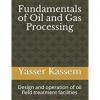hi all,
i have an assignment for my practical work in a gas company. i should make a study about gas dehydration. i am a student, but this is a real problem. so maybe it is better if i post this in "industrial professional" section. i am sorry if this is not appropriate.
In the dry gas field (98% methane), water content shall be reduced to 7 lb/mmscfd from the natural gas before it is delivered to the buyer. gas analysis is routinely made, sample point is just around 1 kilometer from the buyer, from water contet from gas analysis result is 20 lb/mmscfd ( using ASTM D 5454-11 at 14,7 psia and 60F). in the processing facility, it is only separators and compressor. the gas that will be dried in the gas processing facility, is at 110 F and 400 psia (downstream compressor and upstream separator)
1.
i have a confusion to decide the amount of water that shall be removed in gas dehydration unit (glycol dehydration unit). the example from GPSA book section 20 states that in inlet gas water content to absorber is taken from Mcketta and Wehe Graph (fig 20-4). if I use the same method, water content in inlet gas is around 100 lb/mmscfd (at 120 F and 450 psia), but the water content from gas analysis is 20 lb/mmscfd.
if i want to design glycol contactor, which one that i have to use as water content in gas inlet ? 20 or 100 lb/mmscfd ? because it will make big difference in glycol contactor design
i think i will take 20 lb/mmscfd as the water content in gas inlet, but what is the function that graph ? just to make a prediction of gas ability to "hold" the water vapor ? but why GPSA design by using Mcketta and Wehe Graph in the inlet gas water content
2.
there is a reciprocating compressor in the gas processing facility, P suction is 400 psia, P Discharge 400 psia. T suction is 110 F and T discharge is 138 F. which on one is better ? to install gas dehydration unit in upstream or downstream of reciprocating compressor ? henry's law states that gas solubility is higher if partial pressure is bigger, so i guess it is better in the upstream of the compressor , but as far as i remember, the absorption is also better in the lower temperature .
3.
is it possible to make water vapor removal by modifying the separator or scrubber, i mean by adding demister in the separator or scrubber ? it is impossible because droplet size is above 10 micron. am i wrong ?
thanks in advance ![]()
Edited by kloroform, 03 March 2015 - 04:58 AM.

 FB
FB













